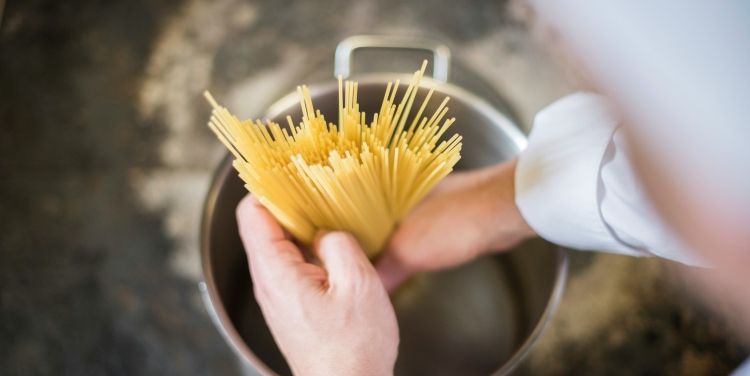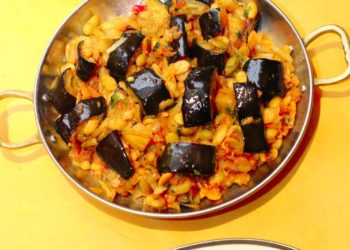In the ever-evolving landscape of culinary arts, few ingredients have stood the test of time, quite like staple grains and pasta. From the earliest civilizations to modern-day gastronomy, these humble yet versatile components have been integral to diverse cuisines around the globe. In this exploration, we delve into the historical significance, nutritional benefits, economic advantages, and culinary possibilities that make grains and pasta indispensable in restaurant menus.
Historical Context and Cultural Significance
Grains have been cultivated since ancient times, with wheat, rice, and maize being among the earliest domesticated crops. The cultivation of wheat began around 10,000 years ago in the Fertile Crescent, heralding the dawn of agriculture and settled societies. Rice, originating in Asia, and maize, cultivated in the Americas, played equally pivotal roles in shaping civilizations and culinary traditions.
Pasta, with its roots in ancient Italy, has a fascinating journey through history. Tracing back to Etruscan and Roman civilizations, pasta evolved from simple dough to the plethora of shapes and textures we know today. Its migration across continents, influenced by trade routes and cultural exchanges, transformed it into a global culinary staple, cherished in dishes from Italian classics to Asian noodle soups.
Types of Staple Grains
Wheat, the most widely consumed grain globally, comes in various forms, such as durum, whole wheat, and semolina. From crusty bread to silky pasta, wheat’s gluten content lends itself to a myriad of culinary applications, making it a cornerstone of cuisines worldwide.
Rice, a staple in Asian and Latin American cuisines, boasts diverse varieties such as basmati, jasmine, and Arborio. Whether steamed, fried, or simmered into creamy risotto, rice serves as a canvas for flavors and textures in dishes spanning continents.
Corn, or maize, is a versatile grain with uses ranging from cornmeal to tortillas to polenta. Its sweet, earthy flavor and hearty texture make it a favorite in dishes like tacos, tamales, and cornbread. Moreover, its prevalence in Latin American and Southern cuisine underscores its cultural significance.
Types of Pasta
Italian pasta, with its myriad shapes and textures, forms the cornerstone of countless classic dishes. From the long strands of spaghetti to the tubular penne and the whimsical farfalle, each shape holds sauces differently, creating endless possibilities for culinary creativity. From red wine infused tomato based dishes to creamy dream dishes. Find more information at Nang Wizard about how to order your cream online to create magical taste delights.
Asian noodles, encompassing varieties like ramen, soba, and rice noodles, offer a world of flavors and textures. From the comforting embrace of a steaming bowl of ramen to the delicate slurp of cold soba noodles, Asian noodle dishes showcase the diversity and complexity of regional cuisines.
In response to dietary restrictions and health-conscious consumer preferences, gluten-free and alternative pastas have surged in popularity. Made from ingredients like lentils, chickpeas, and zucchini, these pasta offers a nutritious alternative while maintaining the familiar taste and texture of traditional pasta dishes.
Nutritional Benefits
Staple grains are nutritional powerhouses, rich in carbohydrates, fiber, protein, vitamins, and minerals. Their complex carbohydrates provide sustained energy, while fiber promotes digestive health and satiety. Additionally, grains offer essential nutrients like B vitamins, iron, and magnesium, contributing to overall well-being.
Contrary to popular belief, pasta can be a nutritious addition to a balanced diet. Whole wheat and alternative pasta offer higher fiber content and a lower glycemic index compared to refined varieties, promoting steady blood sugar levels and prolonged satiety. When paired with nutrient-rich sauces and toppings, pasta becomes a wholesome and satisfying meal option.
Economic and Operational Benefits for Restaurants
Grains and pasta are cost-effective ingredients for restaurant operators, offering high yields and favorable profit margins. Bulk purchasing and efficient storage further enhance their affordability, allowing restaurants to maximize their budget without compromising quality or flavor.
The versatility of grains and pasta allows restaurants to cater to a wide range of tastes and dietary preferences. Whether crafting comforting classics or innovative fusion dishes, chefs can showcase their creativity while accommodating gluten-free, vegetarian, and vegan diners, thereby expanding their customer base and enhancing dining experiences.
From quick-cooking grains to pre-made pasta, these ingredients streamline kitchen operations, reducing preparation time and labor costs. With simple cooking techniques and reliable results, chefs can maintain consistency across their menu offerings, ensuring customer satisfaction with every dish served.
Popular Grain and Pasta Dishes in Restaurants
Iconic dishes like spaghetti carbonara, risotto Milanese, pad Thai, and bibimbap exemplify the diverse culinary traditions that celebrate grains and pasta. Whether savoring the rich flavors of Italy or the bold spices of Asia, diners can embark on a global gastronomic journey without leaving their neighborhood restaurant.
Innovation knows no bounds in the culinary world, where chefs blend traditional techniques with modern sensibilities to create boundary-pushing dishes. From sushi burritos to ramen burgers, fusion cuisine showcases the endless possibilities of combining grains and pasta with flavors from around the world, offering diners a taste of something truly unique.
Conclusion
In conclusion, grains and pasta serve as foundational elements in restaurant menus, offering a world of culinary possibilities to chefs and diners alike. From ancient civilizations to modern-day gastronomy, these ingredients have transcended time and culture, enriching dishes with their textures, flavors, and nutritional benefits. As consumers increasingly prioritize health, sustainability, and culinary diversity, the role of grains and pasta in restaurant offerings continues to evolve.
David Prior
David Prior is the editor of Today News, responsible for the overall editorial strategy. He is an NCTJ-qualified journalist with over 20 years’ experience, and is also editor of the award-winning hyperlocal news title Altrincham Today. His LinkedIn profile is here.













































































